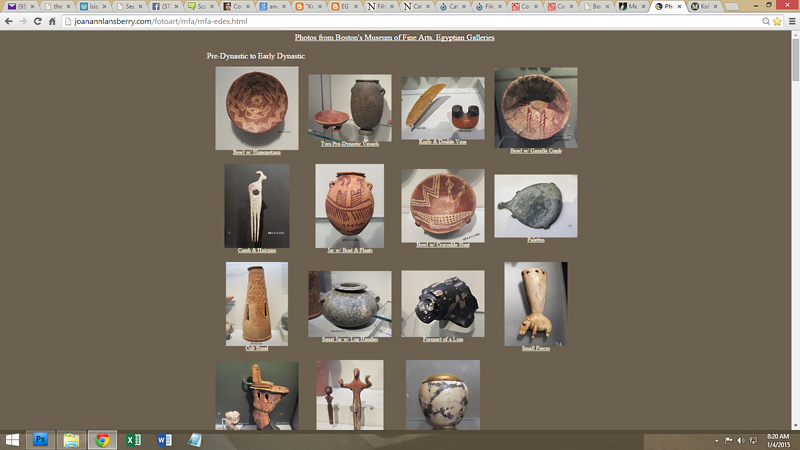
Sunday, January 4, 2015 A
"Photo Gallery at Last Done and..."
8:26am
One photo that is not in it is this sad attempt:
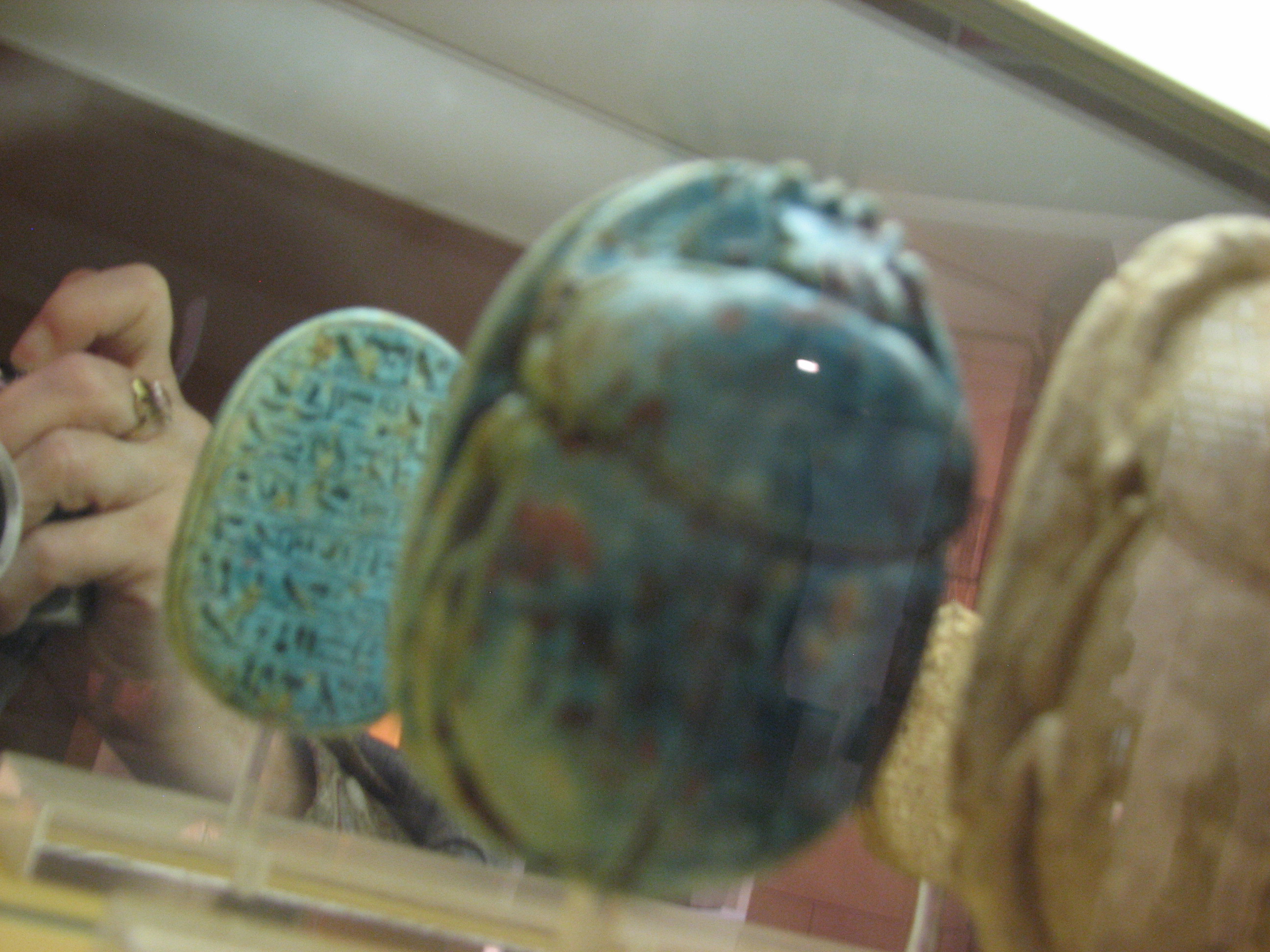
It's such a shame, because had it been in focus, it would have been a really interesting shot!
Through a bit of fortunate "accidental" Googling, I found out what I'd been attempting to capture. A photo shared via FB, sans info, got me searching for the source. Source, I found:
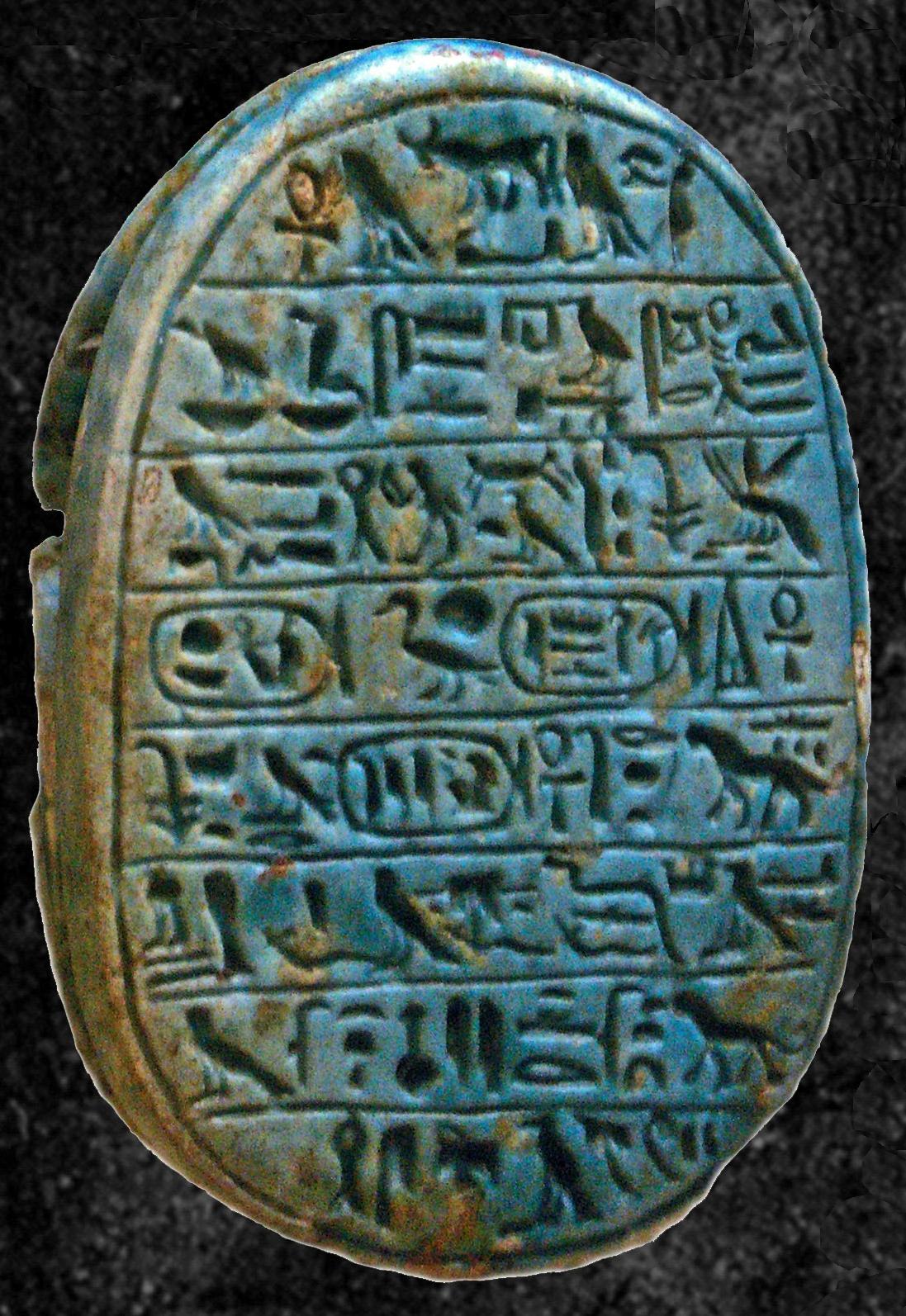
Credit: Jean-Jacques Charlet
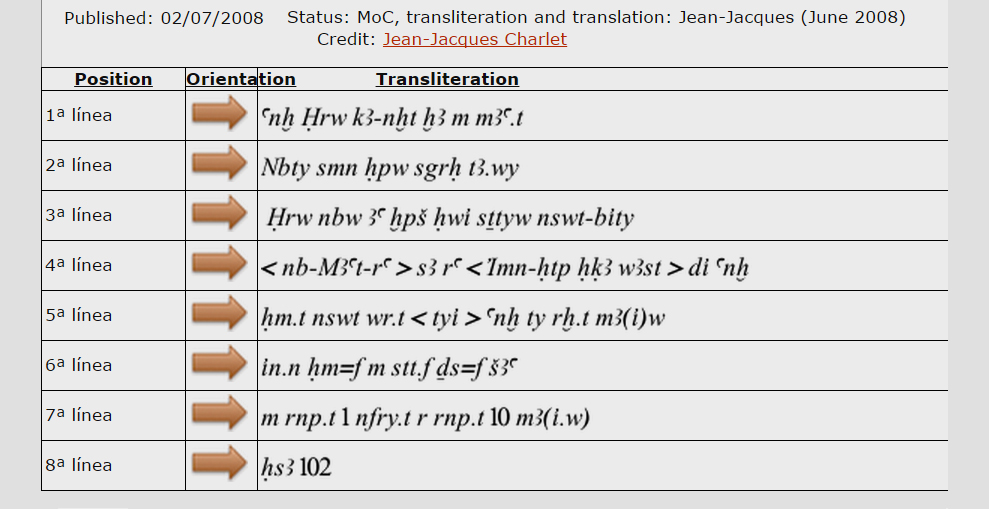
But a bit of a mystery at first, because the accession number given is for a different scarab of Amenhotep III! Accession #1972.873 is of one that is commemorating the building of an irrigation basin. Sadly, this one is announcing Amenhotep's feat of having hunted and slain 102 lions in the first ten years of his reign. NOTHING to brag about! Oh, yes, the pharaoh was powerful, as hunting in those days was no doubt more difficult than it is today. Still, had those lions not have been killed, perhaps there would be more of them today!
Meanwhile, the correct accession number is #04.1810. The museum photo seems to be the reverse, until we realize my poor attempt and Charlet's clear photo are recording the mirror reflection of the hieroglyphs:
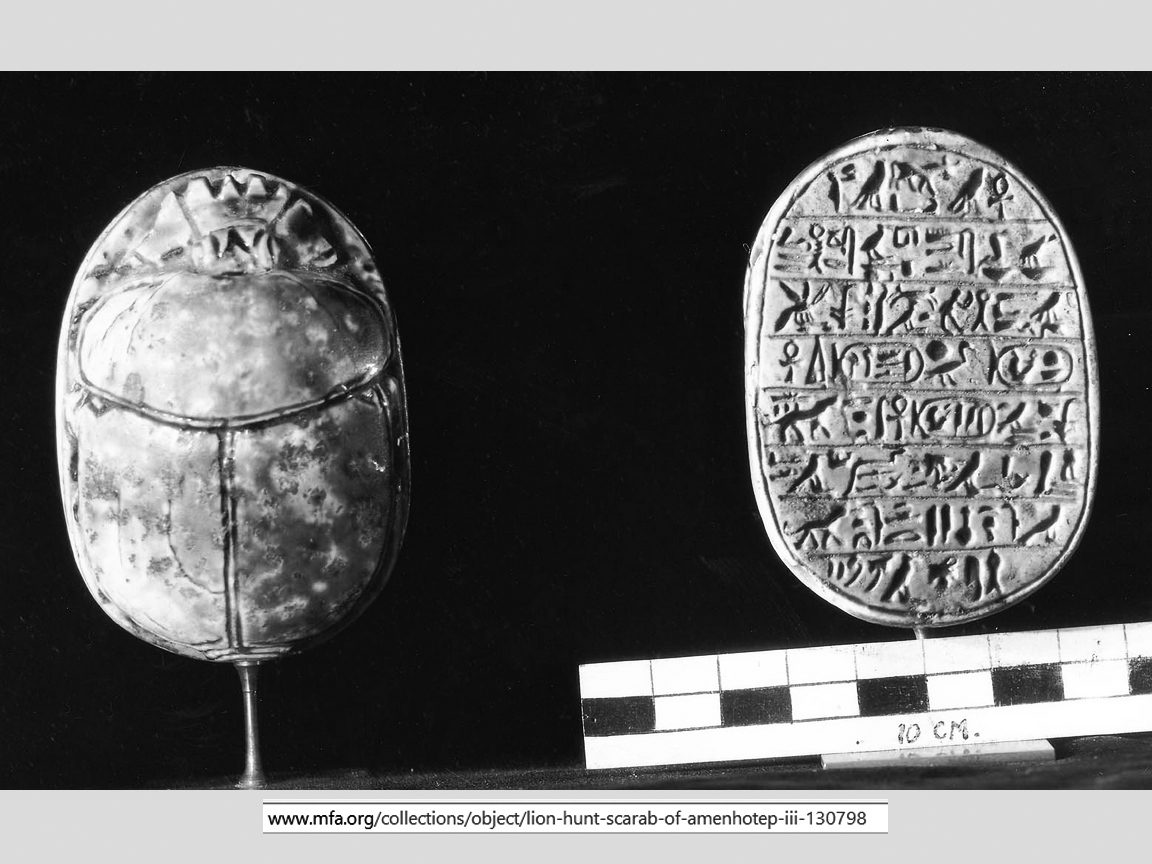

Sunday, January 4, 2015 B
"Scene with Aker"
8:26am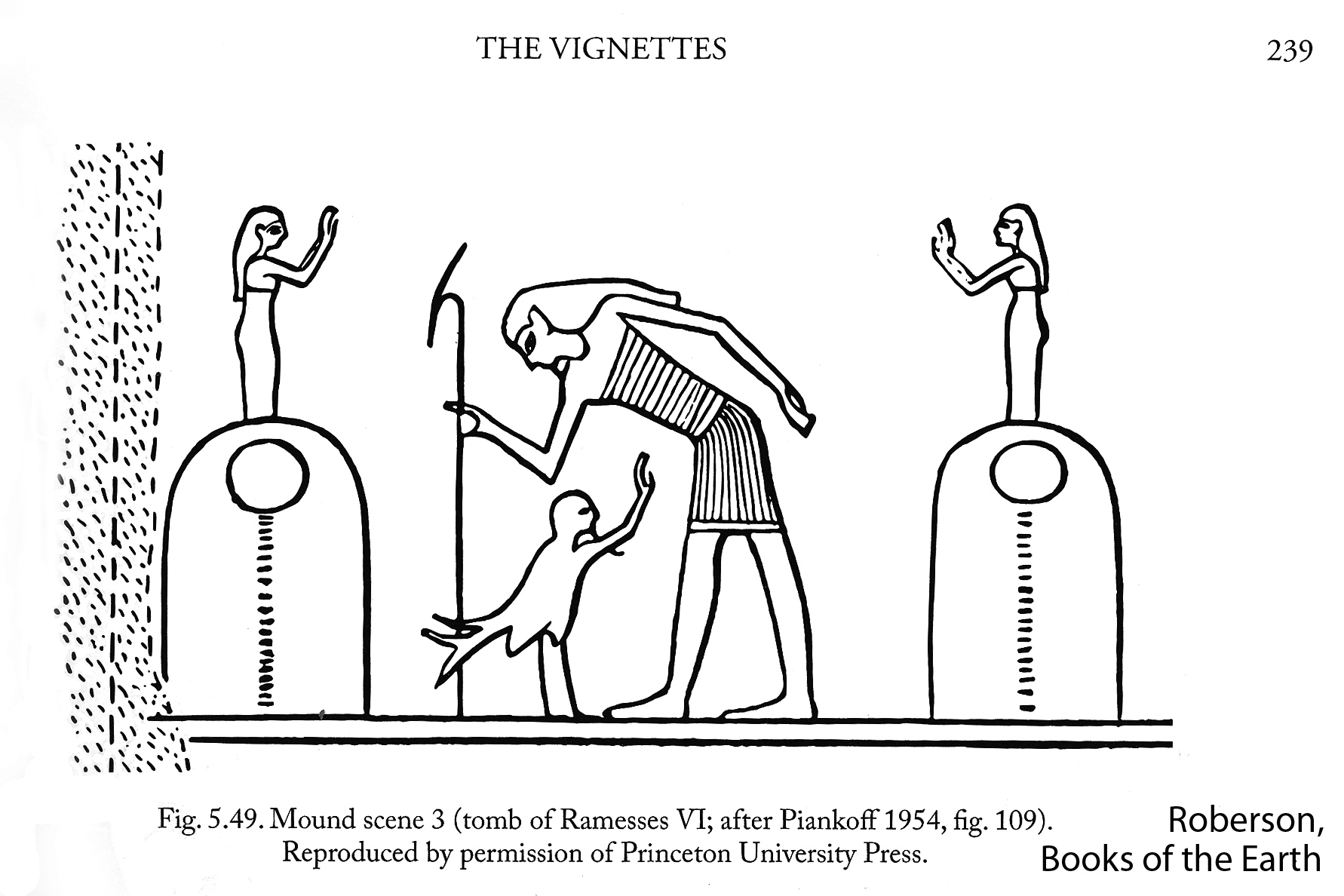
Mound scene 3 (tomb of Ramesses VI; after Piankoff,
in Ancient Egyptian Books of the Earth, by Joshua Roberson, page 239
This is a big, heavy book, with lots of text and images, mostly line drawings of the scenes in the Ramesside tombs. Roberson describes the image above:
"A bearded, male deity wearing a short kilt bends sharply forward, leaning heavily upon a was-scepter. His crooked posture recalls the hieroglyph for 'old age' and 'greatness,' [].

A human-headed ba-bird stands with upraised arms, in the posture of adoration, directly beneath the bent torso of the god. In Ramesses VI's annotation, these two figures are identified as the corpse and ba of Aker. [...] On either side of this central pair appear two oblong mounds. (j3.wt). From the top of each mound emerges a praising goddess, whose feet are not visible. In the version of Ramesses VI, a solar disc with a descending tongue of flame appears inside each of the two mounds." (Pages 239-240)
Thanks to William Petty, we have a photo of this scene:
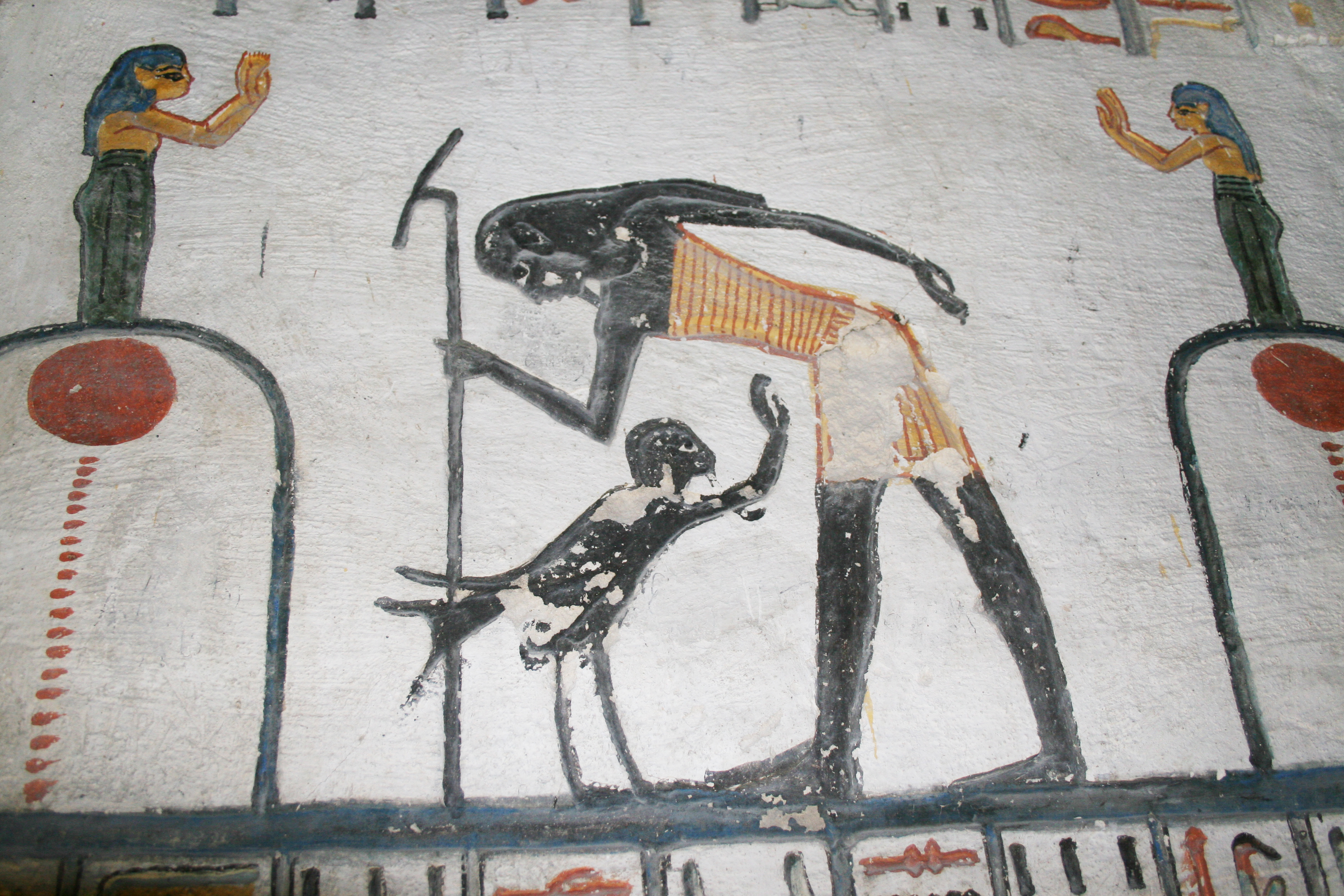
Photo courtesy William Petty
Aker is an earth god, who is "said to open the gate of the earth to allow the king to pass into the underworld, and to protect the king by grasping or restraining the various serpent demons which threaten him (PT 504l 676). In later texts - such as the Book of Aker or Book of the Earth which was inscribed in the tomb of Ramesses VI in the Valley of the Kings, and the mythological papyri of the 21st dynasty - Aker was also said to imprison the coils of the great serpent Apophis when it was cut into pieces." (Richard Wilkinson, Complete Gods and Goddesses of Ancient Egypt, page 176).
